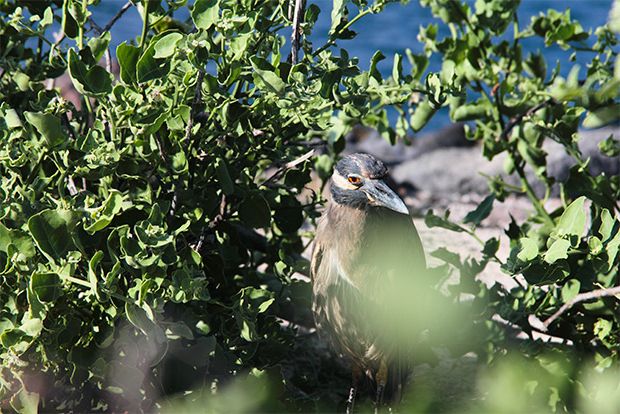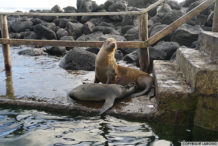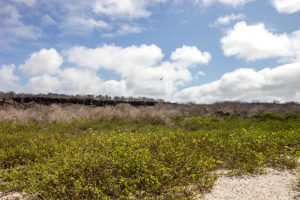Must do in Galapagos Islands
Interested in the most trusted Galapagos tour operator? Travel with us. Highly recommended in TripAdvisor. Enjoy the ultimate traveling experience. The top rated service, multiple options, luxury rooms, trained guides. All Inclusive tours, every week of the year. Must do in Galapagos Islands.
A trip to this lovely Galapagos archipelago lives up to hopes for a unique spot removed from the common worries of society. The air is are commonly bright, as well as sea breezes create that perfect air climate that automatically relaxes the body. The water is an ever-tempting light blue, matched by long sandy beaches of crystal white, red, dark and green. You will discover crystal creeks and sheltered mangrove lagoons, in addition to magnificent cliffs and caves.
We have the best small ships and catamaran offering unrivaled entry to the very best sites in the archipelago together with the highest possible level of comfort and safety. The company is committed to the best experience, that includes hikes, swimming, scuba diving and sea windsurfing. You will find out the exceptional behavior and biological characteristics that species has evolved to adjust to the unique surroundings on each island. Since animals have developed in the absence of people and any other large predators, so you are able to connect very closely with awesome and weird creatures which have no fear of people. Discover among lava flows, white and black sand beaches, secluded coves and splendid underwater environments.
When is the right time to visit the Galapagos?
The Galapagos Islands, found in the Pacific Ocean, about a thousand kilometers (600 miles) west of Ecuador, have a very unusual weather, warm and semi-arid, which has an incredibly hot and comparatively stormy period from January to May, plus a dry and cool time period, as well as cloudy and misty, from July to November.
The landscapes of the Galapagos are barren, except in the bigger islands, which usually receive far more considerable precipitation. As was observed by Charles Darwin, who as you may know examined the details of the species located in the isles, their weather conditions are less hot than a person would likely assume from a place situated close to the Equator, due to the Humboldt Current, which often gets to the location after flowing in the water west of Latin America. Anyway, here the climate is variable from one year to another, because there are completely different marine flows which encounter or alternate in the area (there’s also a hot current from Central America, that runs at a small range and is extra powerful in the periods El Niño), therefore, the climate is tough to foresee.

As said before, in this island destinations there is two seasons: a warm season from January to May, with highest temperature ranges about 29/30 °C (84/86 °F), and a reasonably cool season coming from July to November, called Garua, having daytime temperatures around 24/25 °C (75/77 °F). In the latter, evening temperatures remain tolerable, close to 18/19 °C (64/66 °F), however you will find frequently mists, which result in the condensation of tiny drops (named garua from which the season receives its name), and the atmosphere is frequently covered by low clouds (due to the thermal inversion produced by the cool ocean current). This time period is the very least stormy of the entire year in coasts and plains (considering that the Garua does not generate considerable rain accumulations), while inland hills and mountains, there could be many substantial rains. The top peak is the Vulcan Lobo, 1,707 meters (5,600 feet) high, positioned on Isabela Island.
The warm period, from January to May, is instead the rainiest period, but normally the rains typically are not considerable, and in any event they happen in the form of afternoon showers, that do not eclipse too much the sun. The rainiest month is March.
On the coasts, the rainfall comes down to under 700 millimeters (20 inches) per year, so it’s in no way abundant. Here is the regular precipitation in Puerto Baquerizo; we can easily see the fact that in the hot season, only a few millimeters (a few tenths of an inch) per month accumulate, because of mainly to drizzle and dew configuration.
However, travelers head to the beaches during the rainy period of time, because, it is the one in which the ocean is definitely the warmest.
When to go
Generally, the Galapagos can be visited throughout every season. However, the optimum time to visit Galapagos, in case you also would like to go swimming and also sunbathe, runs from February to May, because it is the most warm and sunniest, though there may be a few downpours or severe storms in the evening.
The cool period, from July to November, is often recommended to explore the outdoors, mainly because it very rarely rains on the flatlands and the temperature is enjoyable, even though you must take under consideration mists, haze and gloomy skies. From September to November the ocean could be a little tough, and this situation can disturb people who suffer from motion illness, during boat travels from one isle to the other.
What clothes you should bring
From December to May (warm period): light outfits, a light sweatshirt for the evening, light raincoat or umbrella for rain showers; sun cap (in the end, we are at the Equator). For trekking in inland hills and the Vulcan Wolf, a bit warmer sport shirt and raincoat, trekking footwear.
From June to November (cold season): light clothing, t-shirt and light coat for the night.
For the ocean, equipment for snorkeling, water shoes or rubber soled footwear.
The Galapagos Islands are possibly the most famous wildlife-watching destination on the planet.
However, best of all, it is packed with wildlife at every turn. Within minutes -occasionally seconds- of landing onto this dot in the middle of the Pacific Ocean, you may be face-to-face with more strangely adventuresome and curious animals than anywhere else on Earth.
Roughly 620 miles from the coast of Ecuador, and slap-bang around the equator, Darwin’s “Enchanted Isles” consist of a bunch of 13 “proper” volcanic islands (bigger than four square miles) plus six smaller islands and at least a hundred islets. Each one has its own unique setting, identifying landscape and inimitable wildlife.
You can view everything from penguins living in the tropics and boobies with glowing blue toes to tool-using woodpecker finches and man frigate birds turning their wrinkled throat sacs in to extraordinary, entirely inflated red balloons. One day you could be watching time-worn giant tortoises from the highlands, and the next you might be snorkeling with sea lions in crystal-clear water. You could be sunbathing on black lava stones next to prehistoric-looking marine iguanas or sitting together with waved albatrosses as they play their bill-circling, swaggering courtship displays (they seem quite like Samurai warriors performing Lord of the Dance).
There really is nowhere else quite like it.
All this said, 170,000 tourists visited the Galapagos past year therefore, unsurprisingly, it is beginning to feel a little cramped. It is a high-profile place and a lot of people want to view it for themselves. The consequence of such an onslaught is that wildlife tourism is much more tightly controlled in the archipelago than anyplace else on the planet. You’re only allowed to visit tiny pockets of this federal park, so you can disembark (from small ships) only at predetermined landing areas, you must walk only on clearly marked paths in strictly disciplined small groups, also you must be accompanied by local certified guides. Regulating tourism with this kind of military efficiency may feel extreme, but it is vital under the conditions. In the end, though, there needs to be a limit and at the not-too-distant future, visitor numbers might need to be capped.
Plan ahead if you wish to visit during the high season. Visiting out of these periods will still offer plenty of adventures and wildlife experiences, but prices may be reduced with fewer other tourists around.
With minimal variation in air and water temperatures throughout the entire year, and numerous species that aren’t migratory, an Isabela Island cruise is an excellent adventure at any time. Generally, however, the waters are clearer between January and March, which makes this an ideal time for avid snorkeling fans. The driest months are generally between August and December, perfect for beach lovers.
Visit the Galapagos in January to observe green sea turtles arriving and laying eggs on the beaches, and in April to see the eggs hatching. July is the prime month for seeing whales off the western coast of Isabela Island. Bird spotters will probably prefer to visit Isabela Island between August and March, once the range of migratory birds is at its summit. October is the breeding interval for fur seals, whilst brown nodes are active in November. December is the best month if you want to see the hatching of giant tortoises.
Before joining any Galapagos cruises, you will initially need to make your strategy to mainland Ecuador. International flights generally arrive at the nation’s capital city of Quito, though it’s also likely to take an international flight to Guayaquil. Flights to the Galapagos Islands leave every day from the Quito and Guayaquil.
Baltra Island gets the biggest airport around the Galapagos Islands, but flights also arrive at San Cristobal. Your tour operator will normally arrange transfers from the airport to your cruise departure point from Baltra or by San Cristobal. Isabela Island cruises generally leave from Puerto Ayora, a major port on Santa Cruz Island.
Early human activity on the islands was extremely damaging for the wildlife as pirates and buccaneers took giant tortoises aboard such as meals. 24% of plant species and 50% of vertebrate species are still considered as endangered due to human activity in earlier times. Clandestine fishing of black coral, freshwater, shark fin, sea cucumber and sea horse is incredibly damaging to the marine life. Population growth caused by tourism is putting a strain on the unique and fragile environment.
GALAPAGOS CRUISES 2024
NEMO 3
| DEPARTURES | ITINERARY | AVAILABLE CABINS | SPACES | |
|---|---|---|---|---|
| There aren't available dates for the selected dates |
















